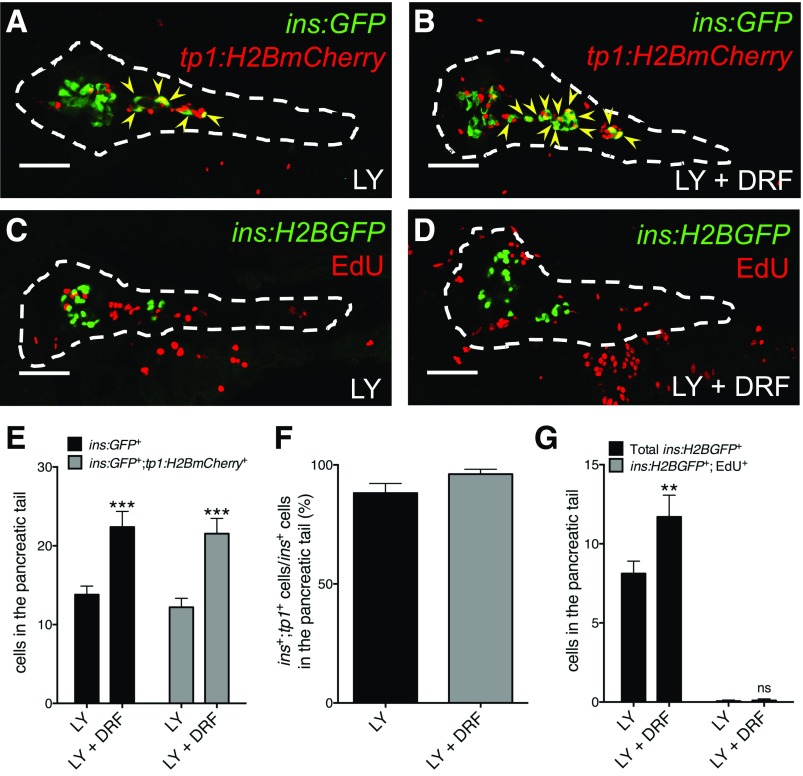Figure 2.
Inhibition of Cdk5 promotes differentiation of duct-derived β-cells. A, B, E, and F: The notch-responsive ductal cells are the major source of β-cell differentiation induced by DRF. A and B: Representative confocal images of the pancreas of Tg(ins:GFP);Tg(tp1:H2BmCherry) zebrafish larvae at 6 dpf treated with LY or LY plus DRF from 3 to 6 dpf, displaying β-cells in green and β-cells of a notch-responsive ductal lineage in yellow overlap (arrowheads). Dashed lines show the outline of the pancreas. Scale bar = 50 μm. E: Quantification of ins:GFP+ and ins:GFP+;tp1:H2BmCherry+ cells in the pancreatic tail per larva at 6 dpf. ***P ≤ 0.001; n = 13–15. F: Percentage of ins:GFP+;tp1:H2BmCherry+ coexpressing cells among the total number of ins:GFP+ cells in the pancreatic tail at 6 dpf. n = 13–15. C, D, and G: DRF did not expand the β-cell population by increasing its proliferation. C and D: Representative confocal images of the pancreas of Tg(ins:H2BGFP) larvae at 6 dpf treated with LY or LY plus DRF from 3 to 6 dpf and incubated with EdU from 5 to 6 dpf, displaying β-cells in green and all cells that had incorporated EdU in red. Dashed lines show the outline of the pancreas. Scale bar = 50 μm. G: Quantification of ins:H2BGFP+ cells and ins:H2BGFP+cells that had incorporated EdU in the pancreatic tail per larva at 6 dpf. **P ≤ 0.01; n = 10–16.

